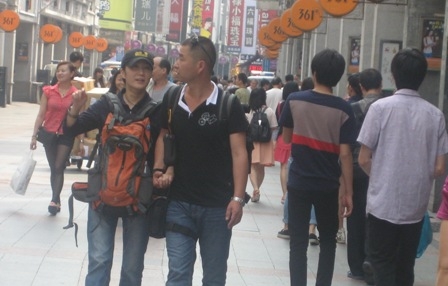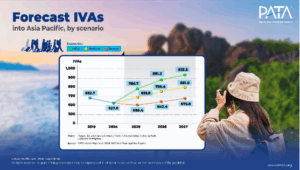International tourism generates US$ 1.4 trillion in export earnings

Madrid : Total export earnings generated by international tourism in 2013 reached US$ 1.4 trillion. Receipts earned by destinations from international visitors grew by 5% to reach US$ 1159 billion, while an additional US$ 218 billion was earned by international passenger transport.
According to the latest UNWTO World Tourism Barometer, receipts in destinations worldwide from expenditure by international visitors on accommodation, food and drink, entertainment, shopping and other services and goods, reached an estimated US$ 1159 billion (euro 873 billion) in 2013. Growth exceeded the long-term trend, reaching 5% in real terms (taking into account exchange rate fluctuations and inflation). The growth rate in receipts matched the increase in international tourist arrivals, also up by 5%, reaching 1087 million in 2013, from 1035 million in 2012.
“These are very positive results as growth in international tourists last year was equal to growth in income generated by over one billion tourists that travelled the world in 2013, for business, leisure, visiting friends and relatives or other purposes. Such results confirm the increasingly important role of the tourism sector in stimulating economic growth and contributing to international trade,” said UNWTO Secretary-General, Taleb Rifai. “These results show that it is time to position tourism higher in the trade agenda so as to maximize its capacity to promote trade and regional integration,” he added.
Apart from receipts in destinations (the travel credit item in the Balance of Payments), tourism also generates export earnings through international passenger transport services (rendered to non-residents). The latter amounted to an estimated US$ 218 billion in 2013, bringing total receipts generated by international tourism to US$ 1.4 trillion, or US$ 3.8 billion a day, on average.
International tourism (travel and passenger transport) accounts for 29% of the world’s exports of services and 6% of overall exports of goods and services. As a worldwide export category, tourism ranks fifth after fuels, chemicals, food and automotive products, while ranking first in many developing countries.
Asia and the Pacific fastest growing region, while Europe takes biggest share
In absolute terms, receipts in destinations around the world increased by US$ 81 billion (euro 34 billion, comparatively less due to the depreciation of the dollar) from US$ 1078 billion (euro 839 billion) in 2012.
Europe, which accounts for 42% of all international tourism receipts, saw the biggest growth in 2013: up US$ 35 billion to US$ 489 billion (euro 368 billion). Destinations in Asia and the Pacific (accounting for 31% of all tourism receipts) increased earnings by US$ 30 billion to US$ 359 billion (euro 270 bn). In the Americas (20% share), receipts increased by US$ 16 billion to a total of US$ 229 billion (euro 173 bn). In the Middle East (4% share) total tourism receipts are estimated at US$ 47 billion (euro 36 bn) and in Africa (3% share) at US$ 34 billion (euro 26 bn).
In relative terms, Asia and the Pacific (+8%) recorded the largest increase in receipts, followed by the Americas(+6%) and Europe (+4%).
Among the top ten tourism destinations by receipts, Asian destinations Thailand (+23%), Hong Kong (China) and Macao (China) (both +18%) saw strong growth, while the United Kingdom (+13%) and the United States (+11%) also posted double-digit increases. Receipts in Spain, France, China, Italy and Germany grew between 1% and 5%.
China, Russia and Brazil account for half the world’s increase in tourism expenditure
The emerging economies of China, Russia and Brazil have been dynamic drivers of outbound tourism in recent years. In 2013, these three source markets accounted for some US$ 40 billion of the total US$ 81 billion increase in international tourism expenditure. China, which became the largest outbound market in 2012 with an expenditure of US$ 102 billion, saw an increase of 26% in spending last year to a total of US$ 129 billion. The Russian Federation became the fourth largest outbound market in 2013, following a 25% growth to US$ 54 billion. Brazil entered the top ten by expenditure at tenth place, on the back of a 13% increase to US$ 25 billion.
The performance of key advanced economy source markets was comparatively more modest, with the exception of Australia which spent 9% more. France (+5%) recovered from a weak 2012, whereas the United States, Germany, the United Kingdom, and Canada all increased expenditure by between 2% and 4%.- UNWTO














